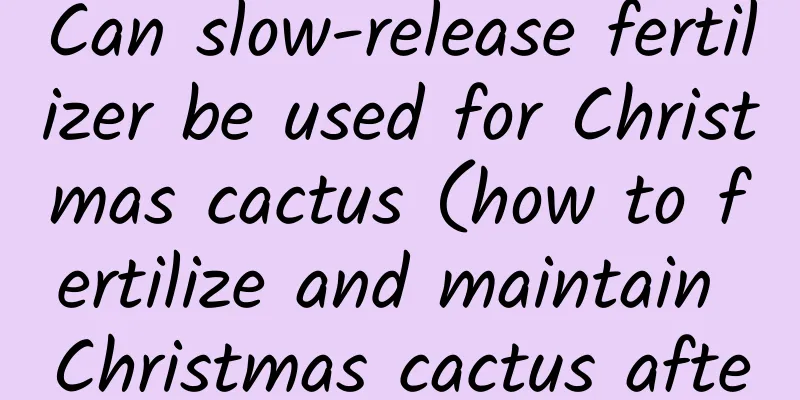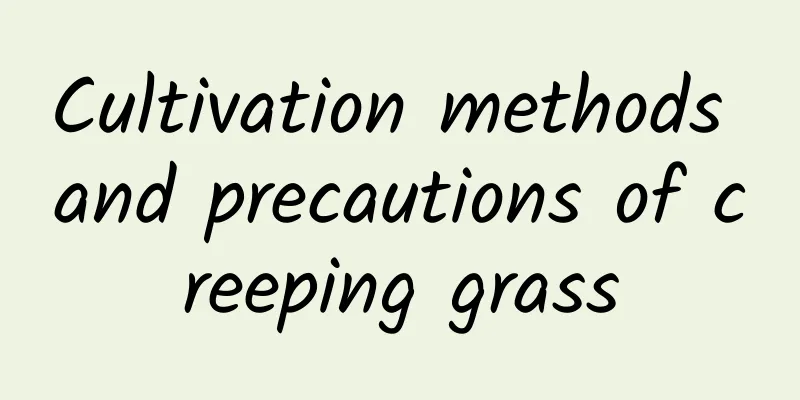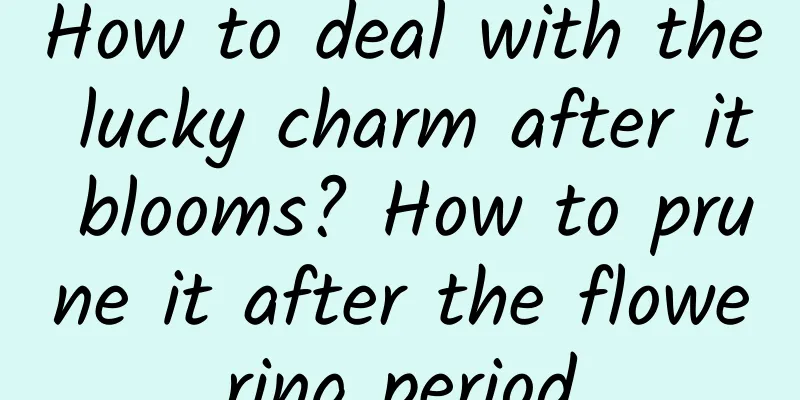Can slow-release fertilizer be used for Christmas cactus (how to fertilize and maintain Christmas cactus after its flowering period)

After the Christmas cactus blooms, you can use slow-release fertilizerSlow-release fertilizer is a resin-coated fertilizer with the characteristics of sustainable release and a long release cycle. It can be used as base fertilizer or applied in holes or directly sprinkled on the surface of potting soil. It will be gradually absorbed by potted plants as watering occurs. Its fertilizer effect is relatively mild, the release cycle is long, and the fertilizer utilization rate and conversion rate are high. It is currently a popular flower fertilizer among flower lovers. Therefore, it can also be used for Christmas cactus that has just finished blooming. Generally, we pay attention to the ratio of nitrogen, phosphorus and potassium when using it, and choose a general slow-release fertilizer with a relatively balanced ratio of nitrogen, phosphorus and potassium. In addition to fertilizing, the maintenance points of Christmas cactus flower after it withersAfter Christmas cactus blooms, the withered flowers should be trimmed in time, and the branches should be shortened by 2-3 sections. This will help reduce nutrient consumption and prevent branch aging. It can also break the apical dominance and promote the growth of new leaves, which is helpful for flowering in the next season. Although Christmas cactus does not need to be repotted every year, it is best to repot and change the soil every 1-2 years. This is beneficial for replenishing nutrients, preventing root aging and soil compaction, and promoting vigorous growth. The root system of Christmas cactus is underdeveloped and it is more prone to aging. Non-grafted Christmas cactus usually grows for 3-5 years before the bottom branches become lignified and the leaves become smaller and smaller, and the quality of flowering declines . Backups can also be reserved through cuttings and grafting to prepare for replacement of the old with the new. Daily care precautions after Christmas cactus bloomsChristmas cactus belongs to the cactus family. It is easy to grow and reproduce, but it is not resistant to high temperatures and severe cold. It needs to avoid long-term direct sunlight during the high temperatures in summer. During the growing and flowering periods, it needs sufficient scattered sunlight. Daily care should avoid water accumulation in the pot and excessive temperature difference between morning and evening to reduce the probability of root rot and falling flower buds. Christmas cactus is not cold-resistant. Its leaves are easily frozen and turned red in low temperatures in winter. Its flower buds are prone to shriveling and falling off when the temperature is below 10℃, making it difficult to guarantee the quality of its flowering. Keeping the pot soil dry and the ambient temperature not lower than 5℃ in winter is conducive to a smooth winter. Fertilization is generally carried out during the bud formation period in autumn and after the flowering period. Pay attention to applying thin fertilizers frequently. |
Recommend
How to grow the fragrant vine in winter
Temperature Management The fragrant vine is a pla...
Tianshan Snow Lotus Price
1. Price The price of Tianshan Snow Lotus ranges ...
How to sow primroses
1. Collecting seeds The first step, of course, is...
How to grow Acer palmatum
1. Maintenance methods 1. Temperature: The Japane...
What kind of fertilizer is good for mung bean base fertilizer (base fertilizer application method)
The role of mung bean fertilizer Mung beans have ...
What are the breeding methods and precautions for mountain turtles?
Mountain turtle breeding method Mountain tortoise...
The difference between motherwort and wormwood, wormwood pictures
1. Difference 1. Different types: Motherwort is a...
What is the best month to plant Trichosanthes kirilowii?
When to plant Trichosanthes kirilowii Trichosanth...
What is the flower language of rose?
1. Its flower language Its flower language is lov...
What is the best season to prune osmanthus branches?
When growing osmanthus, regular pruning is essent...
Learn these tips, lazy people can still grow flowers easily
Indoor flowers and plants Choosing Plants 1. Choo...
How to shape bougainvillea bonsai
Multi-tower bonsai When making a multi-tower bons...
How to plant purple sweet potatoes when they sprout? How to plant purple sweet potatoes when they sprout?
Purple sweet potatoes are quite common in daily l...
How to grow and water succulents in July (how to care for succulents in summer)
The hottest months of the year are often July and...
How to deal with lily of the valley after it withers
Treatment after lily of the valley fades 1. Manag...









